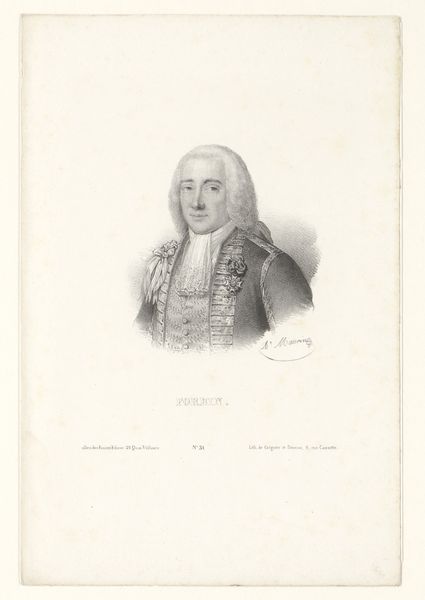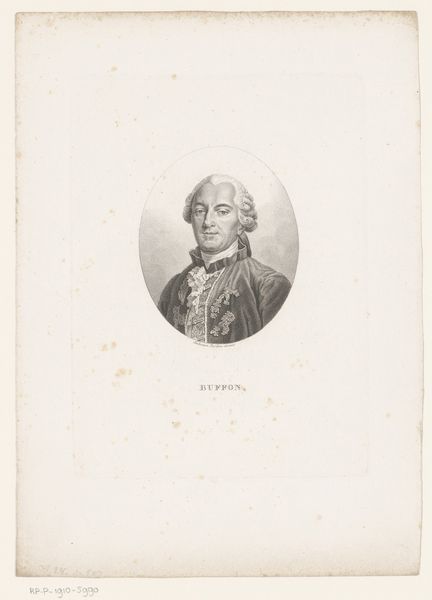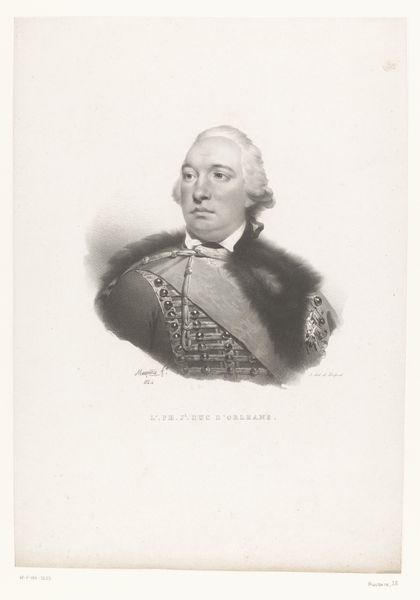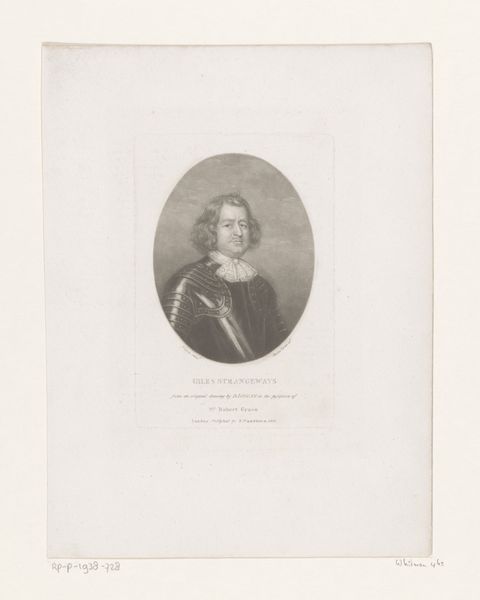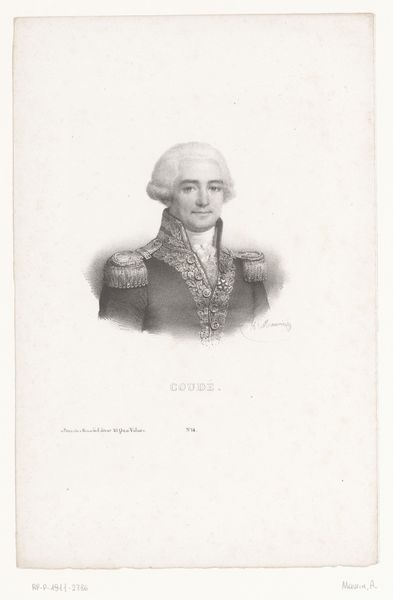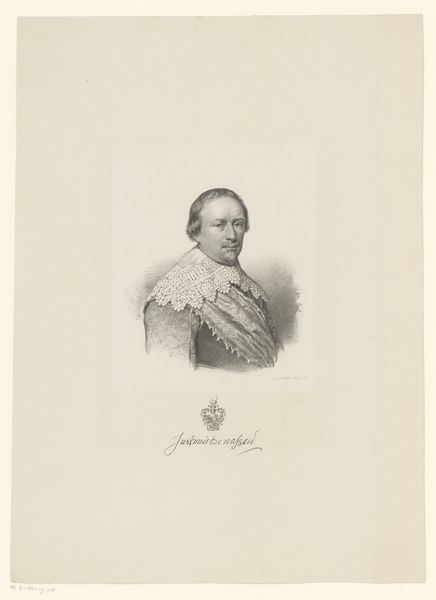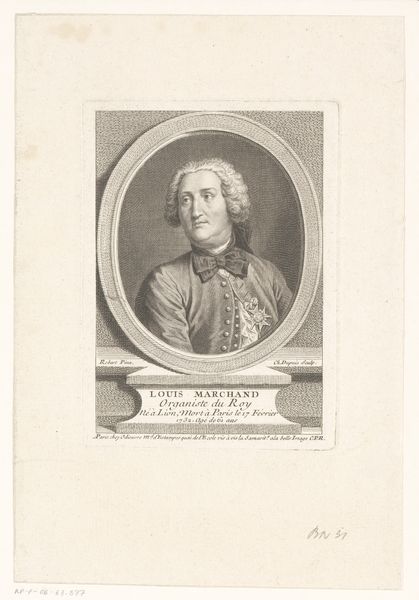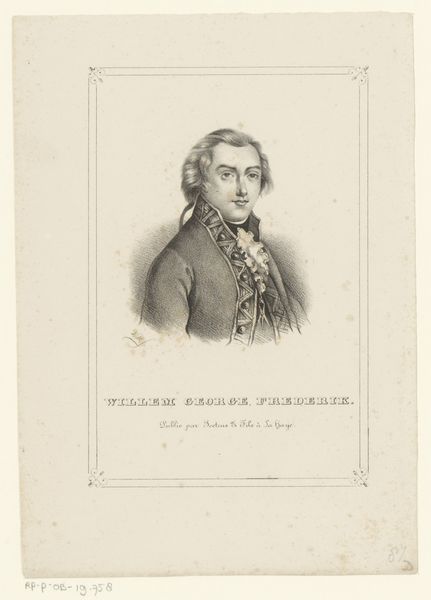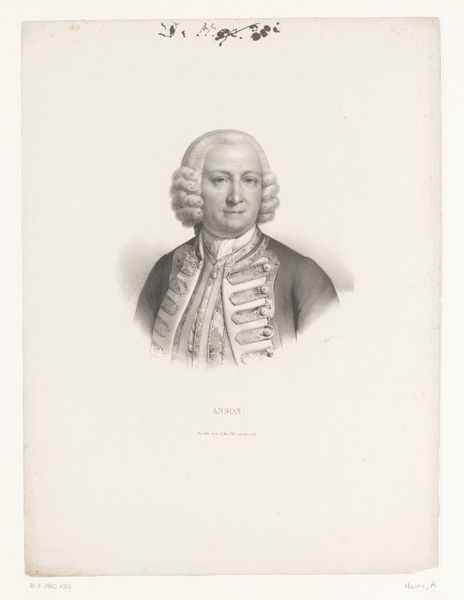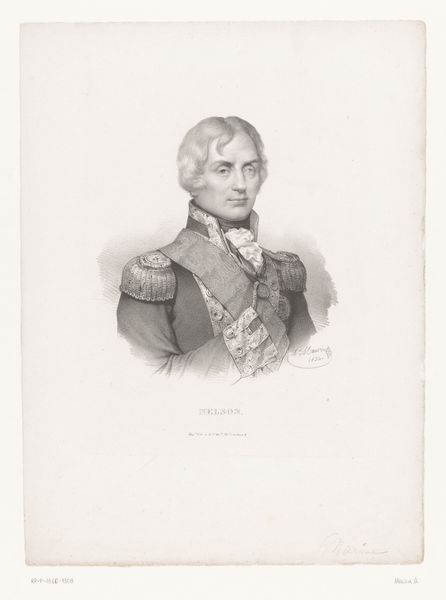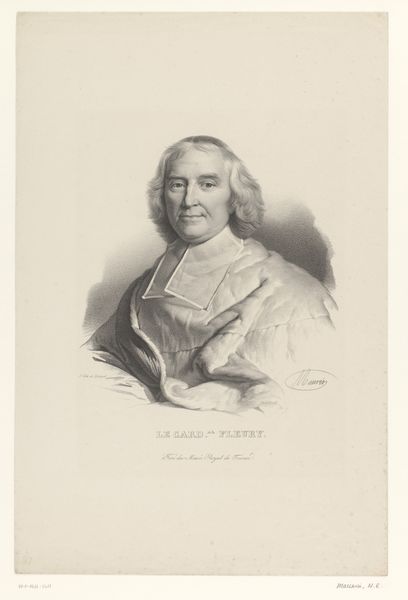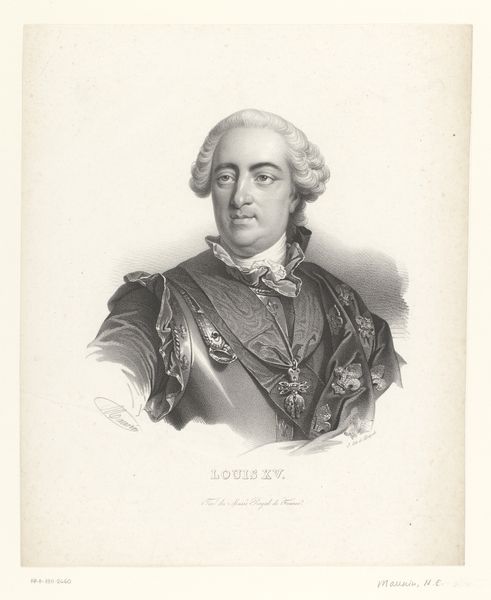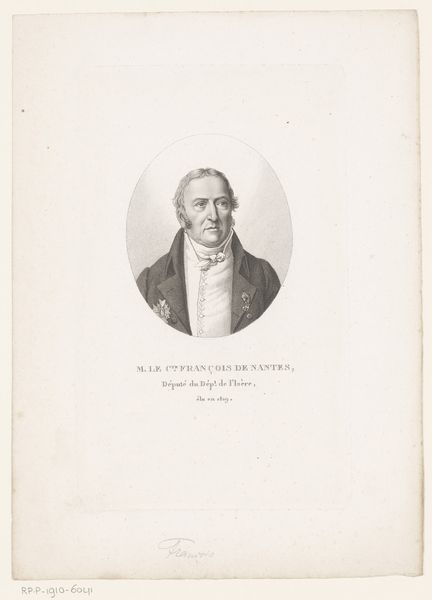
Portret van Henri-François des Herbiers, markies van l'Estenduère 1835 - 1851
0:00
0:00
antoinemaurin
Rijksmuseum
print, engraving
#
portrait
#
neoclacissism
# print
#
light coloured
#
old engraving style
#
classical-realism
#
history-painting
#
academic-art
#
engraving
Dimensions: height 272 mm, width 180 mm
Copyright: Rijks Museum: Open Domain
Antoine Maurin created this portrait of Henri-François des Herbiers, Marquis of l'Estenduère using lithography. It's an interesting choice of process, because lithography was the mass media of its day. This printmaking technique depends on the chemical repulsion between oil and water. The artist would have drawn the image on a flat stone with a greasy crayon, then treated the surface so that ink only adheres to the drawn areas. This allowed for relatively quick and inexpensive reproduction, which democratized image-making. Notice the fine lines and subtle tonal variations Maurin achieved. This speaks to his skill in controlling the medium. But it also raises questions about the portrait's purpose. Was it intended for wide distribution, perhaps as a political statement? Or was it a more personal memento, capitalizing on lithography's accessibility to create a relatively affordable likeness for family and friends? Considering the materials and process involved allows us to look beyond the image itself and consider its role in a broader social and economic context. It encourages us to think about the interplay between artistic skill, technological innovation, and the ever-evolving dynamics of representation.
Comments
No comments
Be the first to comment and join the conversation on the ultimate creative platform.
